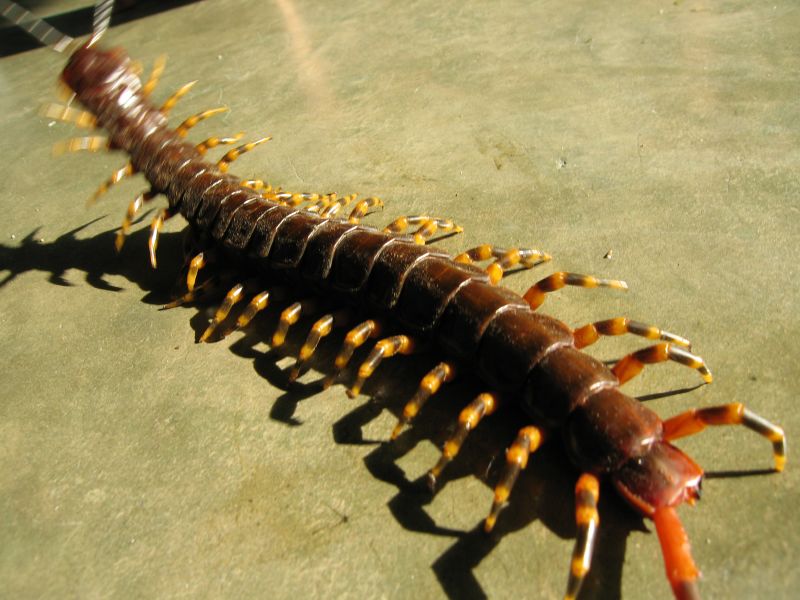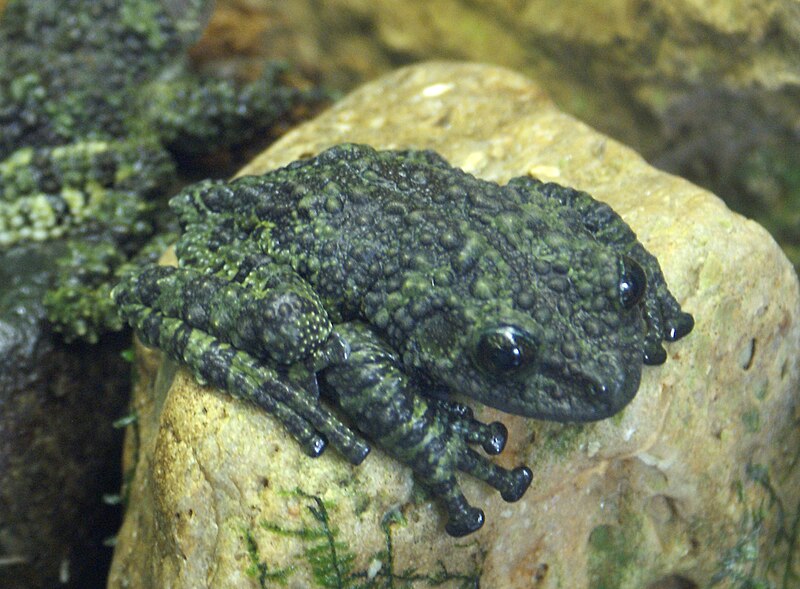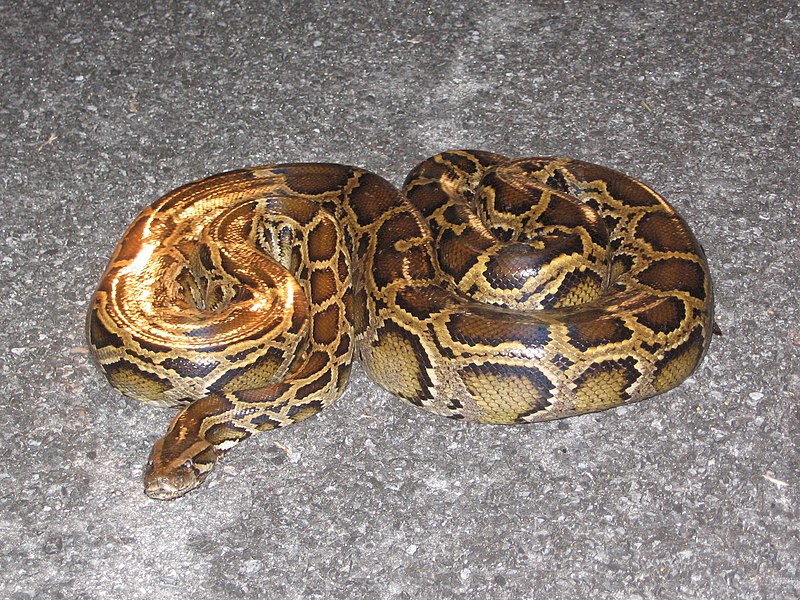 I’m told that bats feature in many people’s nightmares (I’ve kept several species, including Vampire Bats, and have found all to be quite calm, and even trainable in some cases, but that’s just me!). If bats themselves have nightmares, then surely the Amazonian Giant Centipede, Scolopendra gigantea, must make numerous appearances…the video linked below of one hunting bats in a cave will illustrate my point. Another of these aggressive beasts gave me more than a few sleepless nights, and stress-filled days, as well. Read More »
I’m told that bats feature in many people’s nightmares (I’ve kept several species, including Vampire Bats, and have found all to be quite calm, and even trainable in some cases, but that’s just me!). If bats themselves have nightmares, then surely the Amazonian Giant Centipede, Scolopendra gigantea, must make numerous appearances…the video linked below of one hunting bats in a cave will illustrate my point. Another of these aggressive beasts gave me more than a few sleepless nights, and stress-filled days, as well. Read More »
Monthly Archives: March 2011
The Mossy Treefrog – Notes on Captive Care and Natural History
 This article is one of a series in which I plan to provide a brief introduction to both popular and rarely-kept species. I’ll cover such topics as unique habits, common husbandry concerns and little-known tips, pet pros and cons, and so forth. Detailed care articles will follow…until then, I would enjoy receiving your questions and comments. Today we’ll take a look at the Mossy Treefrog or Tonkin Bug-Eyed Frog, Theloderma corticale.
This article is one of a series in which I plan to provide a brief introduction to both popular and rarely-kept species. I’ll cover such topics as unique habits, common husbandry concerns and little-known tips, pet pros and cons, and so forth. Detailed care articles will follow…until then, I would enjoy receiving your questions and comments. Today we’ll take a look at the Mossy Treefrog or Tonkin Bug-Eyed Frog, Theloderma corticale.
Ultimate Camouflage Artists
Mossy Treefrogs made quite a splash in the zoo world when they began showing up about 10 years ago. I was fortunately able to work with some of the first specimens to arrive here, and was immediately taken in by them. Read More »
Artificial Bromeliads as Poison Frog Breeding Sites – Part 2
 In Part 1 of this article I introduced Hagen’s new Smart Plants, an exciting line of realistic artificial plants (Bromeliads and Scindapsis) that contain small water-holding pools at their bases. When properly positioned in a terrarium, they provide naturalistic sites into which female Poison Frogs can deposit their tadpoles. Today we’ll see how other amphibians and reptiles can make use of this new and much-needed innovation.
In Part 1 of this article I introduced Hagen’s new Smart Plants, an exciting line of realistic artificial plants (Bromeliads and Scindapsis) that contain small water-holding pools at their bases. When properly positioned in a terrarium, they provide naturalistic sites into which female Poison Frogs can deposit their tadpoles. Today we’ll see how other amphibians and reptiles can make use of this new and much-needed innovation.
Arboreal Reptiles
In the wild, most highly arboreal snakes and lizards find all the water they need without ever setting foot or belly on the ground. Captives, especially high-strung or wild caught individuals, may be stressed if forced to do so. Read More »
Tortoise Habitats – Glass Aquariums are Not Suitable Tortoise Homes – Part 1
 Tortoises are among the most popular of reptile pets, and many folks now realize the importance of a proper diet, UVA and UVB light, and heat. Yet many well-meaning tortoise enthusiasts continue to provide their pets with grossly inappropriate accommodations – a situation that is fueled by those pet store employees who recommend glass aquariums to first-time owners. Read More »
Tortoises are among the most popular of reptile pets, and many folks now realize the importance of a proper diet, UVA and UVB light, and heat. Yet many well-meaning tortoise enthusiasts continue to provide their pets with grossly inappropriate accommodations – a situation that is fueled by those pet store employees who recommend glass aquariums to first-time owners. Read More »
Invasive Species News – African Rock Pythons may be Breeding in Florida
 A recent article in the journal IRCF Reptiles and Amphibians (V17, 1) provides evidence that the African Rock Python (Northern African Python, Python sebae), may have established a breeding population in southern Florida. The huge constrictors are adapted to take small antelopes and other large animals, and have been killed and consumed people in their native habitat.
A recent article in the journal IRCF Reptiles and Amphibians (V17, 1) provides evidence that the African Rock Python (Northern African Python, Python sebae), may have established a breeding population in southern Florida. The huge constrictors are adapted to take small antelopes and other large animals, and have been killed and consumed people in their native habitat.
Florida’s Introduced Constrictors
At least 45 species of non-native reptiles and amphibians have established breeding populations in Florida; many others have been observed but are not known to be reproducing. Among these are 2 of the world’s largest snakes, the Burmese Python and the Boa Constrictor. Other large constrictors, including the Green Anaconda, Yellow Anaconda and White-Lipped Python, have been found at large in Florida.
Anacondas and others Established?
Given the extent of Florida’s wetlands and other densely-vegetated habitats, it is not unlikely that reproduction of other species has occurred unseen. Anacondas, being aquatic, are especially difficult to find. Years ago, I was told by a reliable source that an entire litter of Green Anacondas escaped from a roadside zoo near Florida City in the early 1970’s…nothing would surprise me at this point!
Northern African Python Study
The article mentioned above looked at Northern African Python sightings and captures in south Florida from 2002-2009. In that period, 7 individuals were found in a small (less than 10 square miles) area in Dade County. Among the captured snakes was an 15.5 foot-long adult female with eggs forming in the oviduct, reproductively active males, and several young-of-the-year. The ages and sexes of these snakes, and their proximity to one another, suggests a breeding population.
Also notable is the fact that the capture sites were less than 1 mile from the border of the Everglades, an immense habitat that could easily hide other African Rock Pythons.
Recent meals – a Domestic Turkey and a Boat-tailed Grackle – were recovered from 2 of the snakes.
Python Hybrids
 The African Rock Pythons were found in an area that abuts or overlaps with the range of Florida’s introduced Burmese Pythons. The 2 species will mate with one another in captivity; the fertility of the resulting hybrids, and their possible affect on south Florida ecosystems, bears further study.
The African Rock Pythons were found in an area that abuts or overlaps with the range of Florida’s introduced Burmese Pythons. The 2 species will mate with one another in captivity; the fertility of the resulting hybrids, and their possible affect on south Florida ecosystems, bears further study.
Further Reading
The African Rock Python in Florida (National Geographic)
Video: Rock Python found in Florida
News Article, Photo: African Rock Python Captured in Florida
Study: Burmese Python Winter Tolerance
Python Sebae image referenced from wikipedia and originally posted by Brian.Gratwicke
 That Reptile Blog – Reptile, Amphibian and Exotic Pet Care and Information
That Reptile Blog – Reptile, Amphibian and Exotic Pet Care and Information
